Project Members
Matthias Arnold M.A. | Member of the Heidelberg Research Architecture (Cluster of Excellence)
|
|
|---|---|
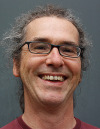 |
Matthias Arnold was trained in East Asian Art History, European Art History and Chinese Studies. He worked for the European Center for Digital Resources in Chinese Studies as coordinator, co-headed the IT department at the Center for East Asian Studies and developed a “Visual database of Chinese characters engraved in Shandong, China” for the in the research project “Buddhist Stone Scriptures in China” at the Heidelberg Academy of Sciences and Humanities. Since 2008 he is working at the Heidelberg Research Architecture (HRA), the Digital Humanities unit of the Cluster of Excellence "Asia and Europe in a Global Context" and the Heidelberg Centre for Transcultural Studies, where he is responsible for the visual resources. Other Projects include the Tamboti Metadata Framework, an open source virtual research environment for the Transcultural Studies developed by the HRA, and the development of Ziziphus, the VRA core 4 based metadata editor for digital still images. He is active in committees of the Visual Resources Association and also a member of the Arbeitskreis Digitale Kunstgeschichte (Working group digital art history) and the German Digital Humanities network (DHd). Matthias Arnold's profile at the Cluster of Excellence: |
Virginia Clauß B.A. | M.A. student in Japanese Studies
|
|
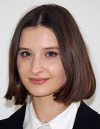 |
Virginia Clauß studies Japanese Studies and East Asian Art History at Heidelberg University since 2009 and graduated with a B.A. degree in August 2014. For her final thesis she translated the illustrated poem anthology Inochi no sanka (“Praises on life”) by prized children’s book author Muku Hatojū into German and analyzed the relationship between text and image. In 2010 she had the chance to deepen her Japanese language skills during a summer course at Mie University. In her M.A. studies she plans to explore the influence of literature on the public reception of demographic change and its social implications in Japan during the 1970s and 80s. |
Eric Decker M.A. | Coordinator of the Heidelberg Research Architecture (Cluster of Excellence)
|
|
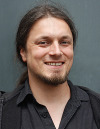 |
Eric Decker is the Coordinator of the Heidelberg Research Architecture (HRA). The HRA is the Digital Humanities Unit at the Cluster of Excellence Asia and Europe at Heidelberg University. In the cluster's first funding period he was directly involved in the creation of the HyperImage project “A New Mirror of Kāśī” and the “Global Politics on screen” project that was realized with the video annotation database pan.do/ra. Besides his work as a coordinator he is active in training sessions for researchers and classes for students. On the development side of the HRA’s work he is involved in the conceptualization and testing of components for the Tamboti Metadata Framework. Eric Decker studied Political Science at the South Asia Institute in Heidelberg. Eric Decker's profile at the Cluster of Excellence: |
Violetta Janzen | B.A. student in Japanese Studies and History
|
|
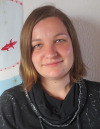 |
Violetta Janzen studies Japanese Studies and History at Heidelberg University since October 2010. From September 2012 to August 2013 she participated in an exchange program continuing her studies in Japanese literature and history at Mie University, Japan. In the summer of 2014 she will graduate with a Bachelor of Arts degree. Her final thesis will be on the history and diversification of Japanese brothels and prostitutes. Violetta Janzen's profile at the Cluster of Excellence: |
Michael Jürges, B.A. | M.A. student in Transcultural Studies
|
|
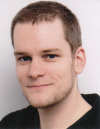 |
Michael Jürges is currently a Master student in his final year at the Transcultural Studies M.A. program at the Cluster of Excellence "Asia and Europe In A Global Context " at Heidelberg University. During his undergraduate studies, he majored in East Asian Studies with a focus on Japan, and in 2011, he wrote his B.A. thesis under the supervision of Prof. Melanie Trede about the topic of Tengu demons in the Nihon shoki and the Konjaku monogatari shū. In 2012, he received a JASSO scholarship and enrolled at Osaka University, where he studied Buddhist art and ancient Japanese scripture (kanbun) for one year. He has worked in IT support at the Centre for East Asian Studies, as a personal assistant to Prof. Trede and he has also worked as an assistant for several projects at the Cluster "Asia and Europe". His M.A. thesis will focus on the transcultural perception and appropriation of cultural practices, using the example of Japanese Taiko drumming as it is practiced in Europe. |
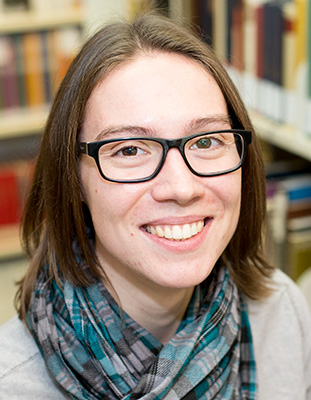 |
Karolin Randhahn studies East Asian and European Art History at Heidelberg University since 2008 and graduated with a Bachelor of Arts degree in 2013. Her B.A. theses explored translation and adaption processes in the making of three-dimensional lacquer medallions after two-dimensional European prints. In 2011 she received a JASSO scholarship and studied one year at Sophia University, Tokyo. She will finish her MA in the Winter of 2015/16. Her final thesis focusses on Japanese export porcelain with lacquer applications and discusses aspects of reception, material interplay, and economic conditions around 1700. |
Katharina Rode, M.A. | PhD candidate, Japanese Art Histories
|
|
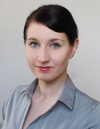 |
Katharina Rode studied East Asian Art History and Japanese Studies at Heidelberg University from October 2006 until graduation as Magistra artium in March 2013. Her M.A. thesis investigates the incorporations of stylistic citations of pre-modern into contemporary Japanese painting, focusing on the works of Aida Makoto, Ikeda Manabu and Yamaguchi Akira. In 2009 she received a JASSO scholarship and studied for one year at Tôkyô Gakugei University. While concentrating on the study of Japanese art she worked as student assistant for several projects at the Cluster of Excellence, „Asia And Europe In A Global Context“ as well as the Institute for East Asian Art History, e.g. the exhibition project Images of Disasters (Juneja, Dirani), Cultural Economic History (Fuess, Mervart, Dusinberre) and HeidICON digitization project (Trede). Recently she started her dissertation project on the changing evaluation of copies in Japanese painting in the late 19th century. |
Klemens Schäfer, B.A. | M.A. student in Japanese Studies
|
|
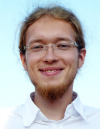 |
Klemens Schäfer studies Japanese Studies at Heidelberg University since 2008 and earned a B.A. in 2012. During this time he translated the book Manga de wakaru handôtai (“The Manga Guide to Semiconductors”) into German. His Bachelor’s thesis explored the opportunities of entering the political and economic stages for women actively participating in consumer-cooperatives in postwar Japan. Since 2013 he works on his Master’s degree focusing on gender studies and translations of modern and classical Japanese texts. In 2014 he received the ISAP scholarship from Osaka University, where he will conduct graduate studies at the School of Letters in the academic year 2014/15. |
Nathali Stumpf, M.A. | Research assistant
|
|
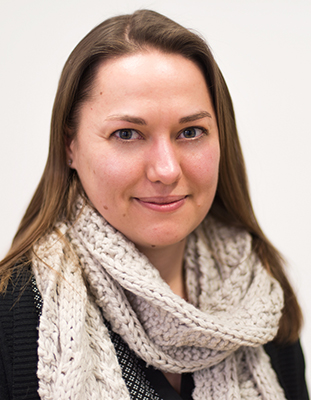 |
Nathali Stumpf studied East Asian Art History and Japanese Studies at Heidelberg University and graduated as Magistra Artium in July 2014. Her M. A. thesis questioned the appearance of numerous manga exhibitions in Germany and other German-speaking countries since 2000. She investigated their emergence and functions within the museum context in general as well as the set-up and perception of selected exhibitions. Currently she is working as a research assistant for Prof. Melanie Trede in the Collaborative Research Centre (SFB 933) “Material Text Cultures” at Heidelberg University. She deals with the aspects of mediality and materiality of illuminated handscrolls and the various concepts of “medium” and “materiality” in different disciplines. Nathali Stumpf's profile at the SFB 933 "Material Text Cultures": |
Prof. Dr. Melanie Trede | Professor for the Histories of Japanese Art
|
|
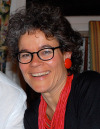 |
Melanie Trede is professor for the Histories of Japanese Art at Heidelberg University since 2004. She taught at Columbia University (1999) and the Institute of Fine Arts, New York University (1999 – 2004) after she had received her PhD at Heidelberg University (1999). Her main area of expertise is pictorial narratives in the history of Japanese art, and she is the author of Image, Text and Audience: The Taishokan Narrative in Visual Representations of the Early Modern Period in Japan (2003). Her current research project focuses on the political, material, and aesthetic history of the Karmic Origins of the Hachiman Deity from the fourteenth through the twentieth centuries. Included in this project are reflections on the biography of handscrolls, the phenomenon of fragmentations, systems of transmission and adaptation of iconographic patterns, and localizing strategies of karmic origin stories. She is a member of the steering committee of the Collaborative Research Center (SFB 933) “Material Text Cultures” at Heidelberg University and heads a project on “Aspects of Mediality and Materiality in illuminated Scrolls of medieval Japan” since 2011; she has also been a principal investigator at the cluster of excellence “Asia and Europe in a Global Context” since 2007. Melanie Trede's profile at the Institute of East Asian Art History: |
Student assistant |
|
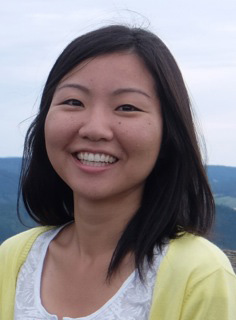 |
Ayaka Yokoo is a Master Student of East Asian Art History at Heidelberg University since September 2014. She graduated from International Christian University in 2009, and for her Bachelor thesis she conducted investigations regarding global exchanges in the context of art between Japan and Europe in the 19th century. After having quitted her job as a programmer in 2012 she decided to continue with her academic career. In her Master Thesis at Heidelberg University she focuses on the 20th-century artist Murayama Tomoyoshi, who is famous for his innovative and avant-garde ideas which very much were inspired by dadaism movements in Germany. |
External Service Provider
Dipl.-Inf. Heinz-Günter Kuper | Software developer of Hyperimage, bitGilde IT Solutions, Berlin
|
|
|---|---|
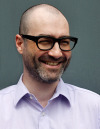 |
Heinz-Günter Kuper is one of the two maintainers of the Open Source HyperImage VRE as well as a managing director of bitGilde IT Solutions UG. He has a background in literary theory and informatics and has been involved in many successful projects ranging from the development of distance learning tools for language acquisition to the deployment of RFID technology as part of complex interactive exhibits in museums. He is a member in good standing of the Gesellschaft für Informatik and the Association for Computing Machinery. |
Dr. Jens-Martin Loebel | Software developer of Hyperimage, bitGilde IT Solutions, Berlin
|
|
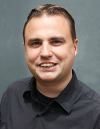 |
Dr. Jens-Martin Loebel is one of the maintainers and developers of the HyperImage Virtual Research Environment facilitating image discourse in the digital humanities and sciences. He is Managing Director of bitGilde IT Solutions UG, an innovative media research company that delivers bespoke software solutions and infrastructure for research, education and cultural projects. bitGilde coordinates and conducts the long term support and further development of the HyperImage system as open source software. He is also speaker of the “Long-Term Preservation" research group at the Gesellschaft für Informatik (German Informatics Society). |











